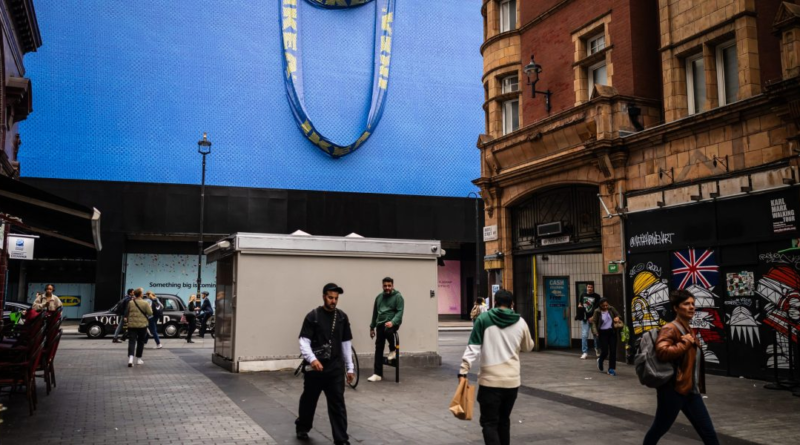IKEA stores owner to spend $1.1 billion on price cuts next year in deflation boon
If you’re a regular shopper, the past couple of years have probably been defined by walking down the aisles and bracing yourself for the latest price hike to your favorite sandwich, a pack of eggs, or even the stuff you bought to decorate your home. Now, though, there is at least one furniture store where signs of price cuts are finally starting to kick in.
Ingka Group, which owns 90% of IKEA stores globally, is planning to invest $1.1 billion to absorb cost increases and reduce the price of its furniture after months of high inflation battered customers’ wallets, its deputy CEO told Fortune.
It might prove to be another teaser for impending deflation in Western markets, as IKEA follows Walmart in planning to slash the prices of its goods.
Deflation coming to IKEA
Juvencio Maeztu, Ingka’s deputy CEO and chief financial officer, told Fortune the company was putting aside $1.1 billion so it could avoid passing on rising costs to customers, a switch from the strategy it had employed in previous years.
Last year, IKEA said it was able to pass on the effects of increased energy costs, supply chain logjams, and the closure of its Russian business in an economic context of more disposable income. It proved a boon for profits, which rose 9% in 2022.
However, months of sustained price rises and higher interest rates have started to wain on customers, particularly in the Eurozone and the U.K., where inflation hit respective peaks of 10.6% and 9.6% last year. Maeztu told Fortune now was the time to give those consumers some respite.
“People have thin wallets, but they still have needs, dreams, and frustrations,” Maeztu said.
“That’s why IKEA has become a destination for those who want to maximize the value of their money. IKEA is made for crisis, so to speak.”
Maeztu said Ingka had kept prices steady last year by deciding to absorb more costs. That left the group’s operating profit flat at €2 billion ($2.2 billion) in 2023, according to earnings figures released Wednesday. Now, it is going one step further and pushing to make its goods cheaper.
That latest drive to slash prices at the discount furniture store—despite rising commodities prices and high transport costs—is also the latest sign of deflation driven by massive global retailers after months of sustained price increases.
Inflation in Ingka’s key markets of Europe and the U.S. is slowly approaching the target rate of 2%, with prices for non-perishables like IKEA furniture growing at a slower rate than food and drink. In the U.S. in particular, IKEA may be part of a trend.
In a November earnings call, Walmart CEO Doug McMillon told analysts the days of high inflation were over, and shoppers may soon see the polar opposite of price rises in the group’s stores.
“In the U.S., we may be managing through a period of deflation in the months to come,” McMillon said.
IKEA’s own focus on suppressing price increases appears to have brought more customers through the door. Ingka increased revenues by 5.4% last year to €44.3 billion ($48.6 billion).
IKEA customers get creative
There is a lot to be revealed from what IKEA’s cash-strapped customers decided to buy last year, and it points to strains in other parts of their budget.
Maeztu told Fortune that Ingka had seen a notable increase in the purchase of storage solutions this year.
House prices have risen 46% in the U.S. since the beginning of 2020, and by around 18% in the EU. That has locked more people out of buying a home, while higher interest rates have strained the wallets of current homeowners.
Maeztu suggested a swarm for the group’s Vaxthus, Drona, and Tjena boxes was a result of the cost of living crunch and those higher house prices, which have forced people to live in smaller spaces and increased the need for creative solutions to pack their clutter out of sight.
“Rather than going to a bigger house that costs more, it’s about how you can make better use of the cubic meter, not only square meter,” Maeztu said. “It’s about how you organize your life, and that’s been developing very well this year.”
Ingka’s drive to create small city center destinations is also focused on driving demand for those people living in smaller spaces. The group plans to open a store on London’s iconic Oxford Street next year, and it just bought a mall in the U.K. coastal city of Brighton for £145 million ($183 million).
“The difference between the big and the small stores is about making IKEA more accessible,” Maeztu said, saying smaller stores’ offering would adapt to the living situation of people in the local area. “Every store, whether it’s big or small, has to be relevant to the local map.”
IKEA workers will get their own personal boost to their wallets following Ingka’s earnings. The company plans to spend €314 million ($320 million) on staff bonuses this year. That’s equivalent to about $3,000 per worker, though the company’s bonus system is tiered based on performance and location.
Ingka’s headcount shrunk by 7% to 165,000 people last year, mostly driven by the company’s exit from Russia, which forced it to say goodbye to 10,000 employees.



